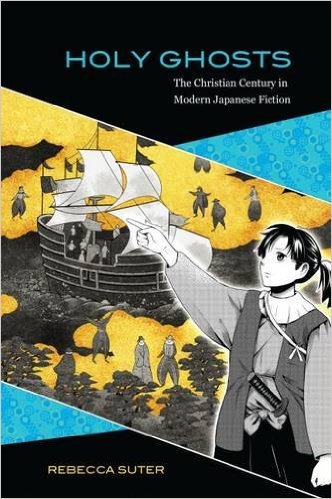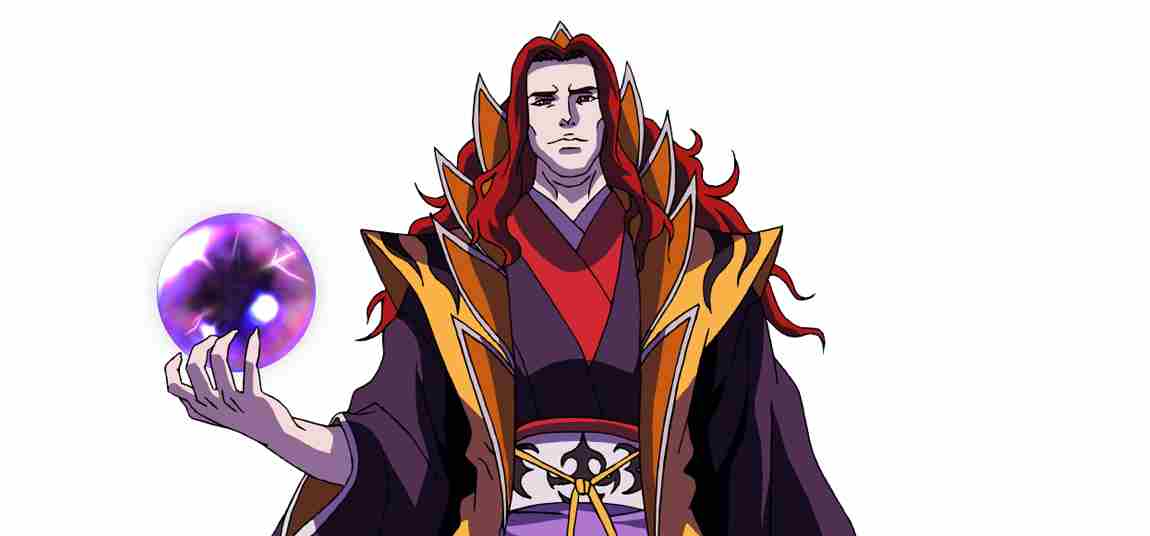Book Review: Holy Ghosts
October 1, 2015 · 0 comments
by Jonathan Clements.
There are, famously, more Christians in Iraq than there are in Japan. That’s in spite of a flourishing of interest among the samurai lords after 1549, some of whom converted to Christianity, took Christian names like Francisco and Augustin, and welcomed the exotic foreign contacts of “barbarian” missionaries. For a time, Nagasaki was a Jesuit enclave, the “Donation of Bartholomew”, handed over to the foreign order by a local ruler, and theirs for as long as the exotic foreign trade goods – Chinese silk and Portuguese guns – kept arriving.
However, by the 1630s, Japan’s love affair with Christianity was dramatically shut down. Christian domains were on the wrong side of Japan’s civil war, and pushed punitively into the front lines of Hideyoshi’s invasion of Korea. After some unwise words about conquest from an angry Spanish sea captain, Christianity was banned and many faithful were martyred. The last hurrah came in the form of the Shimabara Rebellion, a peasant uprising in Japan’s old Christian heartland, led, it was said, by a teenage messiah. After 1638, Christianity went underground, passed on by word-of-mouth, for 200 years.
Naturally, this period has attracted a lot of interest from foreign scholars of Japan. One might even suggest that Japanese authors on Christian subjects are often over-represented in foreign coverage, by academics who favour things that are familiar to themselves rather than relevant to the Japanese mainstream. But even in such coverage, chiefly of the Catholic author Shusaku Endo and his famous Silence, most authors stick to the posh stuff.
 Rebecca Suter’s Holy Ghosts: The Christian Century in Modern Japanese Fiction does not shy away from Endo and his ilk, but as her beautiful and striking choice of cover image makes plain, she is not afraid of digging around in the maze of manga and anime in search of new and exciting comparisons. The novel Silence (1966) is the tale of undercover missionaries sent in to samurai-era Japan to care for the pockets of underground Christians. Captured, they are interrogated by Christovao Ferreira, a real-life historical character who infamously switched sides and joined the samurai persecutors. The story has come to the notice of The Last Temptation of Christ’s Martin Scorsese, whose movie adaptation is due out in 2016. But Suter playfully compares it with Futaro Yamada’s trashy novel Ninja Scrolls of Heretical Doctrine (1962), in which Ferreira is reimagined as a ninja with special Christian witchy-powers. As a result, this is the first academic book I have ever read that contains reference to a search for scattered treasure that has been “hidden in the vaginas of fifteen ninja virgins” – gotta catch ’em all! This has also been made into a movie twice.
Rebecca Suter’s Holy Ghosts: The Christian Century in Modern Japanese Fiction does not shy away from Endo and his ilk, but as her beautiful and striking choice of cover image makes plain, she is not afraid of digging around in the maze of manga and anime in search of new and exciting comparisons. The novel Silence (1966) is the tale of undercover missionaries sent in to samurai-era Japan to care for the pockets of underground Christians. Captured, they are interrogated by Christovao Ferreira, a real-life historical character who infamously switched sides and joined the samurai persecutors. The story has come to the notice of The Last Temptation of Christ’s Martin Scorsese, whose movie adaptation is due out in 2016. But Suter playfully compares it with Futaro Yamada’s trashy novel Ninja Scrolls of Heretical Doctrine (1962), in which Ferreira is reimagined as a ninja with special Christian witchy-powers. As a result, this is the first academic book I have ever read that contains reference to a search for scattered treasure that has been “hidden in the vaginas of fifteen ninja virgins” – gotta catch ’em all! This has also been made into a movie twice.
Yamada’s prolific pot-boiler output, of course, also brought us Makai Tensho (1967, a.k.a. Ninja Resurrection, a.k.a. Samurai Armageddon), in which Shiro “Jerome” Amakusa, teenage leader of the Shimabara Rebellion is reborn as a sorcerous zombie, contrasted in Suter’s book with Seishi Yokomizo’s Skull Abbot (1939), in which he is rediscovered as a vampire overlord on a remote island, working spells with “Christian magic.” Japanese literature classes must be a lot more fun these days.
As Suter’s coverage moves into more recent times, she investigates the queering of Japan’s Christian tales, particularly the development of Amakusa into a pretty-boy bishonen hero. She has plenty of interesting reasons for this, not the least the role of an androgynous pop star, who played him in a musical, but also thoughts on what she calls “the cultural logic of the lost decade” – which is to say, the way in which Japanese culture has developed since the 1990s. There is extensive coverage given to the appearance of Amakusa in the video game Samurai Spirits (pictured at top) – an intriguing and provocative decision, both recognising the likelihood that he would have occupied players for many more hours than a literary character, but also the problematic nature of a character whose “development” is limited to a scattered handful of barks and shouts. She also dwells at great and welcome length on the manga series Amakusa 1637 by Michiyo Akaishi, which begins as a humdrum schoolgirl-in-a-timeslip story, before enmeshing itself deeply in a series of what-if ponderings about the influence that the Christian Century might have had if it had not been so swiftly shuttered.
Suter’s book is a studied consideration of some interesting artefacts, and hence does not aspire or claim to be a checklist of every mention of Christianity in Japanese modern fiction. She does briefly promise some discussion of Neon Genesis Evangelion or the garish Christon café in Tokyo, although they are not mentioned outside her introduction. This is understandable in the sense that their Christian elements are far from deep-seated, but it was a mistake of her publishers to choose to highlight these particular issues by mentioning them in the book’s blurb. Similarly unmentioned, also for perfectly good reason, are such superficialities as the Madonna-era crucifixes of Tokyo Babylon, although it would have been nice for Mamoru Hosoda’s The Girl Who Leapt Through Time to get a namecheck. The Christian elements in that film are so subtle and oblique as to have passed many viewers by, but its time-travelling man from the future specifically comes to our own era in order to see a devotional icon from the Christian Century. It, too, marks a point in time where the future could have been very different, very much in keeping with the film’s over-arching themes of choices made, and lost, and made again.
Jonathan Clements is the author of Christ’s Samurai: The True Story of the Shimabara Rebellion.
anime, books, Christianity, Futaro Yamada, Japan, Jonathan Clements, Makai Tensho, manga, Ninja Resurrection, Ninja Scroll, Rebecca Suter, Samurai Spirits, Shimabara

Leave a Reply